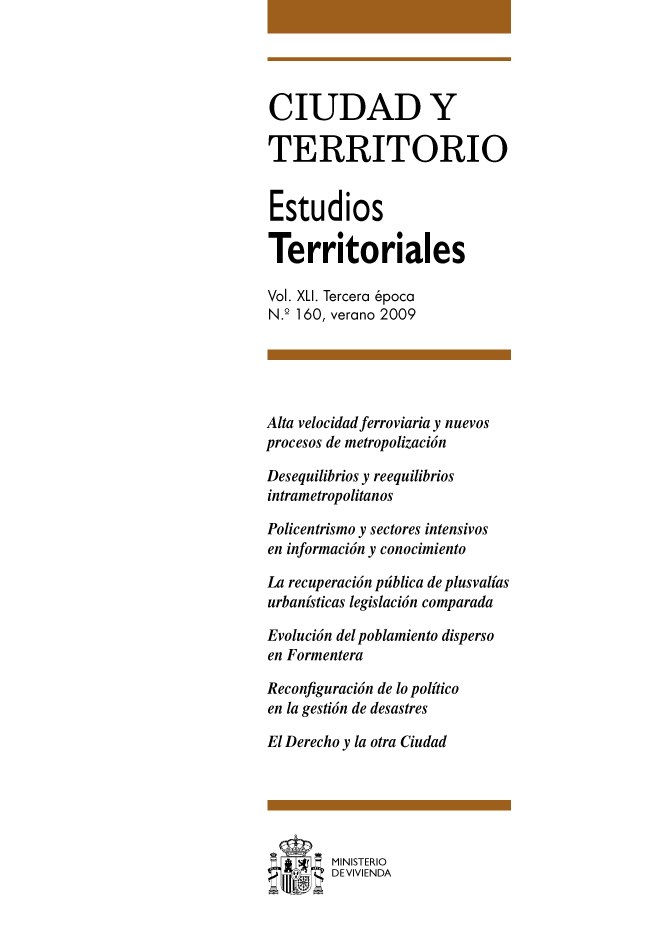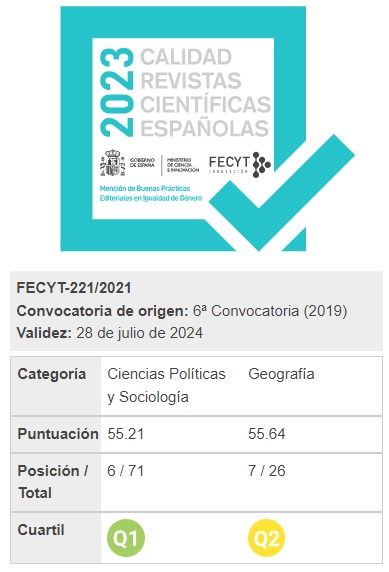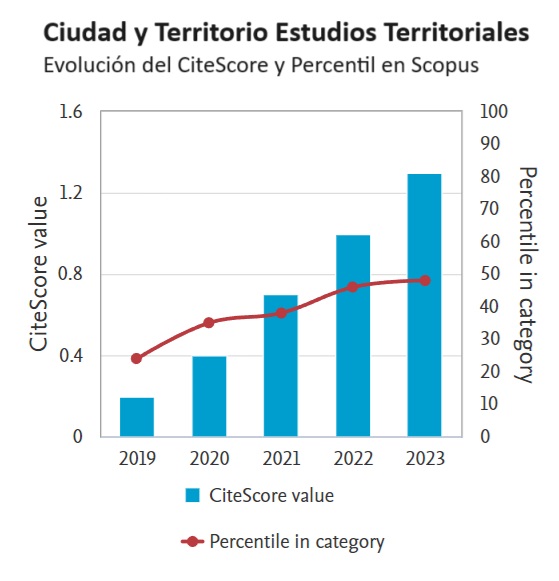New Metropolitan Processes of Change Brought about by High Speed Trains
Keywords:
Áreas metropolitanas, ciudades pequeñas, alta velocidadAbstract
The paper centers upon the novel role of High Speed Trains (HST) when stations are located in small cities
close to a metropolitan area and is thus a study in depth of small cities that are already partially or totally
integrated within metropolitan processes, classifying them according to their placement in the HST network.
The territorial opportunities opened up by HST, the new role of this infrastructure and the decision making
as to these cities turning upon their HST connections are examined. Ten European case studies which respond
to a previously established classifi cation have been selected for this. The analysis made has shown how these
small city stations at around 100km from metropolitan centers, have begun to mark a third type of HST in
contrast with the fi rst or that connecting large cities separated by between 400 and 600km, and the second
that covered those connecting small cities to large ones at around 200km away. Two different kinds of stations
have been shown up by the study and this in terms of the distance of the minor to the major population
centre: metropolitan stations, as an alternative to the traditional metropolitan central station, and stations
on the periphery of the metropolitan area that allow for the metropolitan integration of these cities.
Downloads
Downloads
Published
How to Cite
Issue
Section
License
Copyright (c) 2009 José María De Ureña, Maddi Garmendia, José María Coronado

This work is licensed under a Creative Commons Attribution-NonCommercial-NoDerivatives 4.0 International License.
Considering the provisions of the current legislation on Intellectual Property, and in accordance with them, all authors publishing in CyTET give -in a non-exclusive way and without time limit- to the Ministry of Transport, Mobility and Urban Agenda the rights to disseminate, reproduce, communicate and distribute in any current or future format, on paper or electronic, the original or derived version of their work under a Creative Commons Attribution-NonCommercial-NoDerivative 4.0 license International (CC BY-NC-ND 4.0), as well as to include or assign to third parties the inclusion of its content in national and international indexes, repositories and databases, with reference and recognition in any case of its authorship.
In addition, when sending the work, the author(s) declares that it is an original work in which the sources that have been used are recognized, committing to respect the scientific evidence, to no longer modify the original data and to verify or refute its hypothesis. Author(s) also declare that the essential content of the work has not been previously published nor will it be published in any other publication while it is under evaluation by CyTET; and that it has not been simultaneously sent to another journal.
Authors must sign a Transfer of Rights Form, which will be sent to them from the CyTET Secretariat once the article is accepted for publication.
With the aim of promoting the dissemination of knowledge, CyTET joins the Open Journal Access (OA) movement and delivers all of its content to various national and international indexes, repositories and databases under this protocol; therefore, the submission of a work to be published in the journal presupposes the explicit acceptance by the author of this distribution method.
Authors are encouraged to reproduce and host their work published in CyTET in institutional repositories, web pages, etc. with the intention of contributing to the improvement of the transfer of knowledge and the citation of said works.







